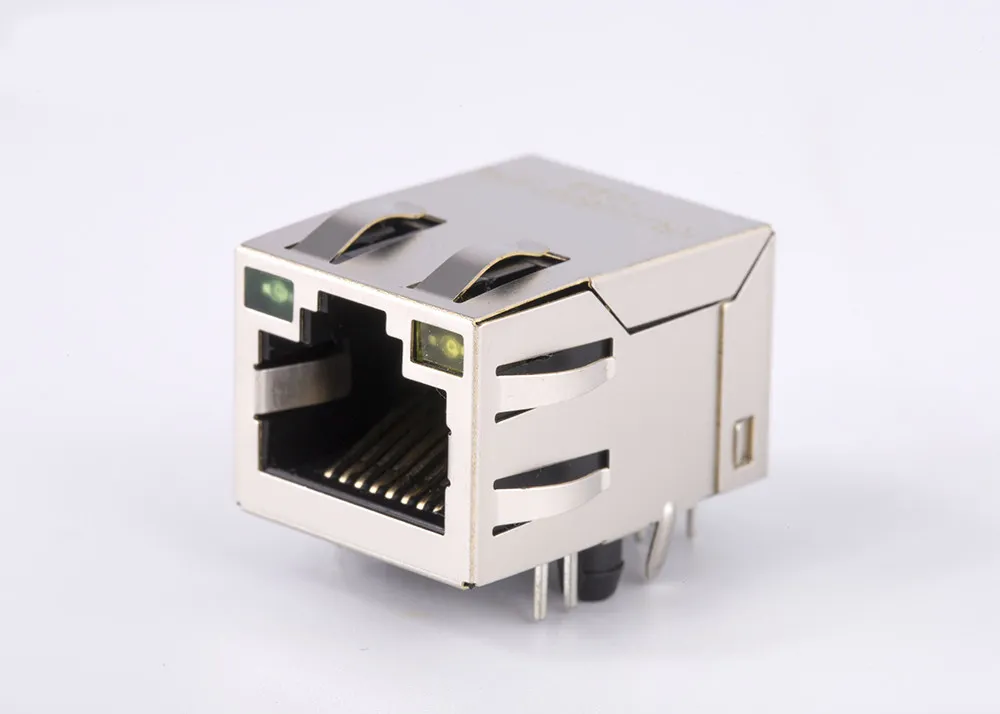The Importance of RJ45 Connectors in Medical Imaging Systems
Introduction
Medical imaging systems, such as MRI machines, X-ray devices, CT scanners, and ultrasound equipment, play a vital role in diagnosing and treating patients. These systems generate large amounts of data—images, scans, and patient information—that need to be shared and analyzed quickly and accurately. One often-overlooked but crucial component in making all of this possible is the RJ45 connector. While most people associate RJ45 connectors with computer networks and internet connections, these small, yet powerful connectors are also essential in the world of medical imaging. In this article, we'll explore how RJ45 connectors help improve medical care by enabling faster, more reliable communication between imaging devices, medical professionals, and healthcare systems.
In the context of medical imaging, RJ45 connectors help link imaging machines like CT scanners or MRIs to the hospital's computer network. These connectors allow imaging devices to transmit large files—like detailed medical images—quickly and securely to other systems, such as storage servers, workstations, or the hospital’s electronic health records (EHR) system.
Why Are RJ45 Connectors Important in Medical Imaging Systems?
Medical imaging systems produce vast amounts of data that must be transmitted and processed in real-time. When a patient undergoes an MRI scan or a CT scan, the images need to be sent to a radiologist or specialist for analysis, often right away. RJ45 connectors, through their role in Ethernet networking, ensure that this process happens smoothly and without delay.
Here are some key reasons why RJ45 connectors are essential in medical imaging:
- Fast and Efficient Data Transfer
Imaging systems generate large files—MRI images can be several gigabytes in size, for example. RJ45 connectors, which are used in Ethernet cables, allow for high-speed data transfer between medical imaging equipment and the network. Ethernet can transmit data at speeds ranging from 1 Gigabit per second (Gbps) to 10 Gbps or more, which is critical when large image files need to be transferred quickly. This helps doctors and radiologists access diagnostic images without long waiting times, leading to faster decision-making.
- Reliability and Stability
In healthcare, reliability is crucial. The data transferred from an imaging machine could be vital for diagnosing a medical condition. RJ45 connectors, through Ethernet networks, offer a stable and consistent connection. This ensures that imaging data isn’t lost or delayed, and that devices remain connected to the network. If a system experiences a connection drop or failure, it can interrupt critical diagnoses, potentially delaying life-saving treatments. With RJ45 connectors, medical professionals can rely on continuous, stable communication between devices, even during busy times or high network traffic.
- Standardized and Universal
One of the biggest benefits of using RJ45 connectors in medical imaging is that they are standardized across most devices. This means that hospitals and healthcare facilities don’t need specialized cables or connectors for each piece of equipment. Whether it’s an MRI machine, a CT scanner, or a workstation in the radiology department, they can all be connected using the same Ethernet cables with RJ45 connectors. This makes installation easier, reduces maintenance costs, and ensures that devices from different manufacturers can communicate with each other seamlessly.
- Remote Access and Telemedicine
The role of RJ45 connectors extends beyond the hospital walls. With fast, reliable data transmission, healthcare providers can access medical images remotely—whether from another department in the same hospital or from a completely different location. This is especially helpful in telemedicine, where specialists can consult on cases without needing to be physically present in the same place as the patient or imaging equipment. Using Ethernet networks and RJ45 connectors, medical images can be securely transmitted to healthcare providers anywhere in the world. This means quicker diagnoses, faster treatments, and the ability for patients to access healthcare no matter where they are located.
- Improved Integration Between Systems
In modern hospitals, medical imaging systems don’t operate in isolation. Imaging devices need to be integrated with other hospital systems, like the Picture Archiving and Communication System (PACS), patient databases, and electronic health records (EHR). The RJ45 connector allows these systems to communicate with each other via a centralized network. For example, an X-ray machine can send images directly to a PACS server for storage and easy retrieval by doctors, or a hospital’s central system can automatically update a patient’s record with the latest imaging results. This smooth integration helps create a more efficient, connected hospital environment, reducing errors and improving patient care.
DIMUD Conclusion
While it might seem like a small part of the bigger picture, the RJ45 connector plays a critical role in the smooth operation of medical imaging systems. By enabling fast, reliable, and standardized communication between imaging equipment and hospital networks, RJ45 connectors ensure that medical professionals can access the information they need, when they need it, to provide timely and accurate diagnoses. Whether it's for transferring large medical images quickly, enabling remote consultations in telemedicine, or ensuring that devices communicate seamlessly, the RJ45 connector is an unsung hero in modern healthcare.
Thanks to the Ethernet cables and RJ45 connectors used in medical imaging, patients can receive faster diagnoses, doctors can make quicker decisions, and healthcare systems can function more efficiently, ultimately improving patient outcomes and the quality of care.
To find products and services more accurately, please try entering keywords for search.
For more product and service content, please contact us and send an email to sales@dimud.com.
We sincerely look forward to connecting with you!


